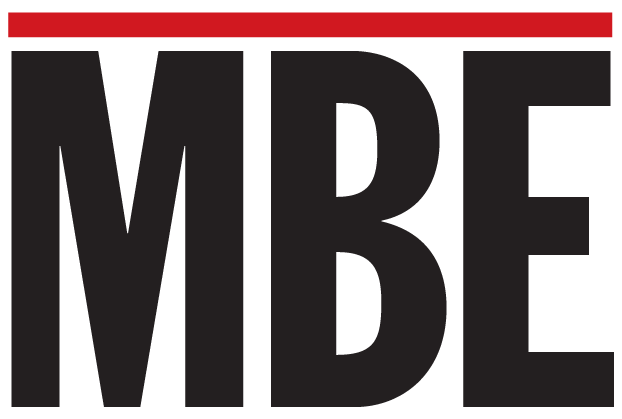
Scaling a business is more than just increasing sales or hiring more employees. It’s about creating a foundation that allows for growth without collapsing under pressure. According to Tony DiSilvestro in The Business Scaling Blueprint: Building a Foundation to Grow Your Brand, true scaling is a strategic and systematic approach that ensures longevity, efficiency, and profitability.
We’ll explore key insights from DiSilvestro’s methodology while weaving in practical strategies and real-world scenarios to help you scale effectively.
The Difference Between Growth and Scaling
Many entrepreneurs mistake growth for scaling. Growth is when a company increases revenue while also increasing resources at a similar rate—more employees, bigger office space, additional expenses. Scaling, on the other hand, is the ability to increase revenue exponentially while adding resources only incrementally.
DiSilvestro explains, “A business that focuses solely on growth without a scalability plan will eventually hit a breaking point. The key is building a model that expands efficiently without a proportional increase in costs.”
For example, a boutique marketing agency growing from five to ten employees to serve more clients is experiencing growth. However, a SaaS company automating its onboarding system to serve 10,000 users instead of 1,000—without significantly increasing customer service costs—is scaling.
Step 1: Lay the Groundwork for Scaling
Assessing Your Business’s Scalability Readiness
Not all businesses are ready to scale. Expanding too soon can cause financial strain and operational bottlenecks. Before scaling, ask yourself: “If my business suddenly doubled in size tomorrow, could we handle it?”
Here’s a quick scalability checklist:
- Consistent Revenue Growth: If revenue is steadily increasing, market demand is present.
- Scalable Business Model: Can you increase revenue without a matching increase in costs?
- Reliable Leadership Team: Scaling requires strong leadership to manage new complexities.
- Operational Systems in Place: Automated processes and documented workflows reduce inefficiencies.
A bakery experiencing steady orders might consider expansion. However, without a systemized production process, scaling up could lead to delayed deliveries and dissatisfied customers. The key is operational readiness.
Step 2: Build Systems That Can Handle Growth
Building a Scalable Infrastructure
Every business needs scalable infrastructure—systems that handle 10X more customers without 10X more headaches. DiSilvestro emphasizes, “Technology and processes are the backbone of a scalable business. If your operations rely solely on manual efforts, growth will always be limited by human capacity.”
If your business got 10 times more customers tomorrow, would your systems keep up—or would they fall apart?
Key Areas to Optimize:
- Technology Investments: Implement scalable software like Customer Relationship Management (CRM) tools and Enterprise Resource Planning (ERP) systems.
- Process Automation: Automate invoicing, email marketing, and client onboarding.
- Data-Driven Decision-Making: Utilize analytics to predict trends and optimize strategies.
Step 3: Build a Scalable Team (Without Overhiring)
Strengthening Your Team for Growth
Many businesses panic-hire during growth. They add employees too quickly, thinking more staff equals better efficiency. But scaling means hiring strategically.
Your team plays a pivotal role in scaling. DiSilvestro advises, “Hire for where you want to be, not just where you are now.”
- Leadership Alignment: Ensure leadership is on board with scaling strategies.
- Clear Roles & Responsibilities: Define job functions to prevent bottlenecks.
- Strategic Hiring: Focus on essential roles like operations managers and growth strategists.
- Growth-Oriented Culture: Encourage adaptability and continuous learning.
Smart Hiring for Scaling:
- Hire operations managers who improve efficiency.
- Invest in training & leadership development for existing employees.
- Outsource non-core functions (IT, bookkeeping, social media).
Step 4: Financial Planning for Scaling Success
Many businesses fail at scaling because they run out of money. Revenue might be growing, but if expenses outpace profits, disaster looms.
Scaling requires strong financial discipline to avoid cash flow crises. DiSilvestro warns, “Many businesses fail not because they don’t have demand, but because they lack the capital to support expansion.”
Financial Strategies for Scaling:
- Budgeting for Growth: Allocate funds for marketing, tech, and hiring.
- Securing Capital: Explore small business loans, venture capital, or crowdfunding.
- Cash Flow Management: Use forecasting tools to anticipate financial needs.
Step 5: Scale Marketing & Customer Retention
Expanding Your Reach Without Losing Customers
Many businesses focus only on new customers when scaling. But retention is cheaper and more profitable than constant customer acquisition.
Scaling Marketing Efforts:
- SEO & Content Marketing: Invest in targeted digital campaigns like SEO and paid ads.
- Customer Retention Tactics: Implement loyalty programs and personalized engagement.
- Expanding to New Markets: Identify untapped audiences and regions.
For example, you can offer referral discounts while maintaining high customer engagement through personalized offers.
Overcoming Scaling Challenges
DiSilvestro stresses, “Scaling isn’t just about strategy; it’s about anticipating roadblocks and preparing solutions before they arise.”
Common Challenges:
- Operational Bottlenecks: Processes slow down as demand increases.
- Cash Flow Constraints: Rapid growth can strain finances.
- Customer Satisfaction Risks: Increased volume can compromise quality.
Proactive Solutions:
- Monitor key performance indicators (KPIs).
- Develop contingency plans.
- Seek expert guidance or mentorship.
Step 6: Sustaining Success: Measuring Growth and Adaptation
Once scaling is underway, maintaining momentum is key.
Key Metrics to Track:
- Revenue growth and profitability
- Customer acquisition and retention rates
- Employee satisfaction and retention
Continuous Improvement:
- Collect customer and employee feedback
- Stay updated on industry trends
- Regularly assess business goals and adjust strategies
Final Thoughts
Scaling a business isn’t just about growing bigger—it’s about growing better. Scaling isn’t a one-time event; it’s an ongoing process. By focusing on efficiency, financial preparedness, and strategic hiring, businesses can expand without losing stability.
As Tony DiSilvestro reminds us, “A scalable business is one that thrives without breaking under pressure. Build the right foundation, and your business will grow beyond expectations.”
Ready to scale? Assess your business readiness and start implementing scalable systems today.













